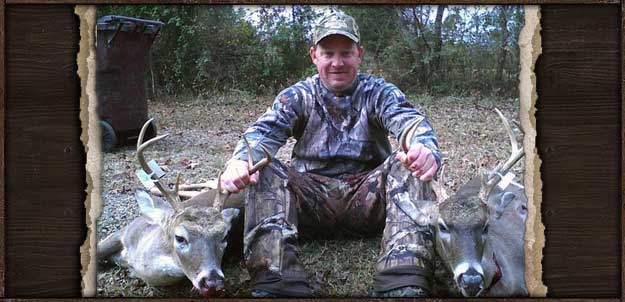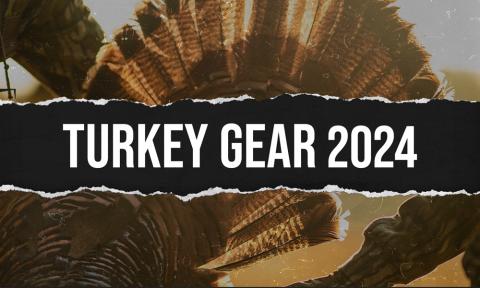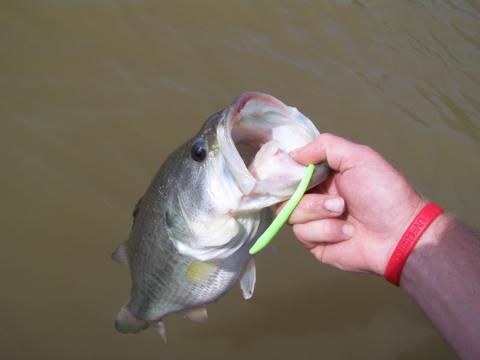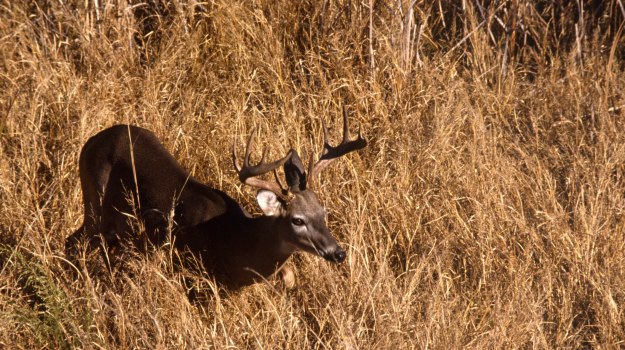
Editor’s Note: Parrish Elliott of Fairview, Tennessee, is the regional manager for the members of the Mossy Oak ProStaff for Tennessee, Arkansas, Louisiana, Mississippi, Georgia and Alabama. The ProStaff goes to consumer shows, participates in hunts for disabled veterans, conservation organization banquets, QDMA meetings, spring turkey seminars, deer shows and other outdoor functions where they represent Mossy Oak, meet the public and help the consumers any way they can. These people are the Mossy Oak family’s boots on the ground. Mossy Oak ProStaff members are scattered across the nation. These ProStaffers also help the National Wild Turkey Federation (NWTF) with its events for the Jakes Program (young turkey hunters), Kids Hunting For a Cure, and other events and charities for young people.
I love to deer hunt, and I’m primarily a small plot hunter. There’s 220 acres of hardwoods that never has been clear-cut that’s adjacent to my family’s farm. When I was growing up if we saw a deer, we shot the deer, because we never had deer on our property way back then. Today, thanks to the efforts of Tennessee’s Department of Conservation and the tremendous amount of education available for the deer hunter, we’ve learned how to better manage deer herds on small properties. We’re now taking bigger and better bucks and seeing more bucks than ever in the past. We’ve learned how to manage deer to let our bucks grow to their full potential, and that’s a tremendous shift from the days when we were only looking for a deer to take that day.
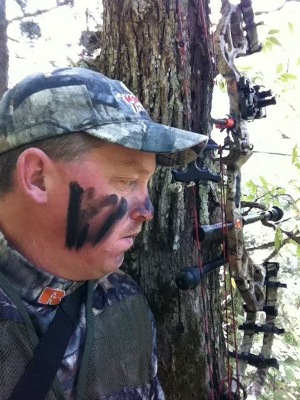 Only two of us that hunt that 220-acre property now - another Mossy Oak ProStaffer and me. Over the last couple of years, we’ve been able to take four shootable bucks there, and last season we took the biggest buck we’ve ever taken off the property. He scored 133 inches. We’ve really found that putting out minerals like BioRock has increased the size, and more importantly the antler mass, of the bucks we have on our property. We’ve also learned how critically important having a sanctuary for older-age-class bucks is to our success.
Only two of us that hunt that 220-acre property now - another Mossy Oak ProStaffer and me. Over the last couple of years, we’ve been able to take four shootable bucks there, and last season we took the biggest buck we’ve ever taken off the property. He scored 133 inches. We’ve really found that putting out minerals like BioRock has increased the size, and more importantly the antler mass, of the bucks we have on our property. We’ve also learned how critically important having a sanctuary for older-age-class bucks is to our success.
We are strong believers in trail cameras, and we use the trail cameras to tell us our buck-to-doe ratio and to tell us when new bucks move onto our property. We’ve learned that when you’re hunting small properties, especially during the rut, we’ll often have an opportunity to see bucks with our trail cameras that we may not have seen all year long. Often these are the more mature bucks that we have an opportunity to take. I really enjoy putting trail cameras out at the end of the season to see what bucks have survived hunting season. When I put the cameras out again in the summer, I get to see what new bucks have moved onto the property, watch their antlers grow and develop a hit list for the bucks we want to take in the upcoming season.
We tried planting green fields, but we realized that we had terrible soil on the power line right-of-way that was the only property that we could plant. That’s why we started using the mineral program we have. We’re fortunate that there’s plenty of acorns on this property and other natural browse for the deer. Since we’ve been using BioRock and passing up young bucks, we’re seeing more mass on the bucks we harvest. We’ll probably never shoot a deer that scores 150 to 180, because the genetics in our herd tend to produce narrow main beams, with tall tines. Although there’s hunting pressure all around our 220 acres, I believe we can attract and hold bucks, because we have good bedding areas and an abundance of acorns. We also have our stands set-up as either morning stands or afternoon stands to leave as little human odor as possible when we’re going to and from our stands.
Day 1: Parrish Elliott Talks about Mossy Oak’s ProStaff
Tomorrow: Parrish Elliot Believes You Never Can Know Everything – Even about Small Hunting Properties














